Canadian National Railways Water Facilities
These notes have been prepared by Andrew Jeanes, Doug Wilson and Colin Churcher and members of the Ottawa Railway History Circle| Kingston Subdivision (CN) (formerly Cornwall and Gananoque subs.) | ||
| Turcot West |  CN 6250 The water tank is visible behind the signal and over the third car in the train. | |
| Ste. Anne de Bellevue | The tank at the Ste. Anne de Bellevue was demolished in 1960 (Cornwall Standard Freeholder 31 January 1961) | 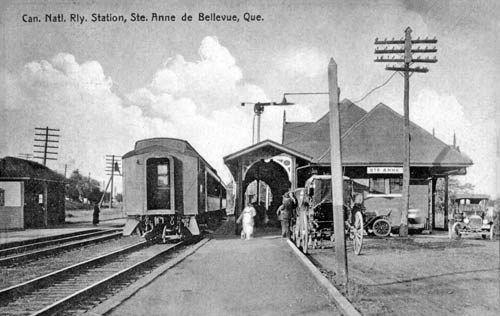 The water tank can be seen through the canopy |
| Cornwall original line | Cornwall Freeholder of September 30, 1889: “Not having any more use for the tank house since the hydrants have been erected, the G.T.R. Co. have torn down that building.” Lafontaine states that in 1887 standpipes were installed at the station, likely when the Cornwall municipal water system came into operation. Cornwall Freeholder of October 9, 1896: “The G.T. is building a large tank at the west end of the Cornwall station to enable engines to take on water more rapidly than from the crane. It is 28 ft. in diameter and 18 ft. deep, elevated on a stone foundation 6 ft. high. The tank will hold 50,000 gallons of water, will steady the pressure in the mains and will improve the value of the waterworks for fire protection, having been advised by the Underwriters’ Association for some years past. It will enable engines to take water in 2 1/2 minutes instead of 8 (min).” 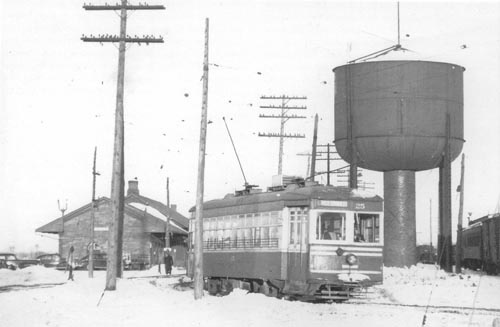 Looking east at the original Cornwall station grounds with a 50,000 gallon steel water tower. Photo by Allan Toohay Cornwall
Standard-Freeholder of January 31, 1961 noted that the CNR was destroying
the still new 100,000 gallon water tower at the post modern station
site. | |
There
were two standpipes at Cornwall, one for each main line. 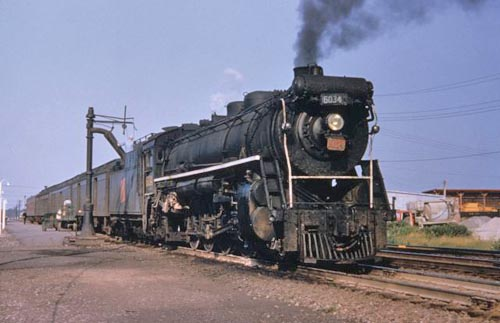 CN 6034 East taking water 20 July 1955 The tank at the old station was demolished in January 1961 (Cornwall Standard Freeholder 31 January 1961) | 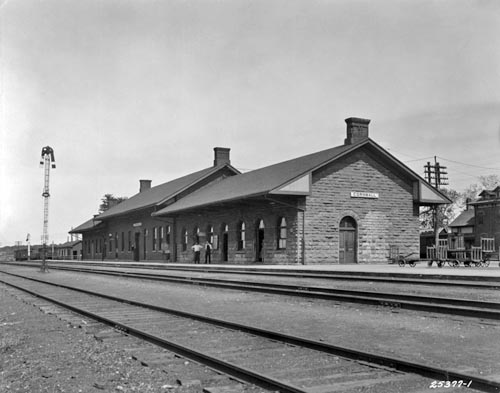 CNR station 1926  CN 5587 Labor Day 1955 Matt-2195 | |
| Cornwall, after diversion | In May 1957 the CNR relocation was opened as a result of the
St. Lawrence Seaway and Power Project so rails were moved, stations
closed and new ones erected. From Cornwall Standard Freeholder Tuesday 31 January 1961 (exer[ts) Tank Busters Tower demolition end of an era The felling of a 100,000 gallon water tower at the new Canadian National Railway Station Monday marked the end of an era in railroading. The tower was the last visible reminder of the age of the steam driven locomotive. It has been empty a long time. It's last gallons were used up years ago when the CNR switched from steam to diesel locomotives. The "pufferbillies" have long since vanished to the scrap yards where they sit gathering rust awaiting their turn to become a victim of the cutting torch. Jack Gallant of Cornwall was in charge of demolishing the tower and was assisted by Mark Fielding and Gerard Fontaine. The work is not new to Jack Gallant as was revealed in an interview. "This past summer I took down 19 of them," he said. More recently he has taken down the tower at the old CNR station. Other towers which were victims of his cutting torch include the one at Morrisburg and three others at St. Anne de Bellevue, Ste, Hyacinthe and Sherbrooke, Quebec. Asked how he went about demolishing these relics of a by-gone age Mr. Gallant replied that most of the time he cut illegible and let the tower fall in a predetermined area. This is the method he used at the new station. The tower at the old railway station posed a problem however, and could not be brought down in the conventional way. Here a maze of telegraph and electrical wires ran close to the tower. To cut its supports and allow it to fall would probably have severed many of these wires. Therefore it had to be taken down piecemeal. Following demolition of the tower, steel is cut into smaller pieces and shipped out to the scrap yard. For those who became attached to the steam locomotive, the disappearance of the water towers is the "end of the line," and the coming generations will probably never know what a steam locomotive was, unless they dig up some old magazines on railroading when the "pufferbilly" was in its glory. |  This
is looking east, the current VIA station is being built in the distance
on the right. The date is 1956 so the tower was just put in and
the Pitt Street overpass is being built where the photographer is
standing. The signal was likely for trains to stop at the station
or to water up. Credit to the Cornwall Community Museum. |
| Lyn | Brockville Recorder 1 February 1895 Mr. G. Cornish of Belleville, with his staff of carpenters is busy reconstructing the two G.T.R. water tanks at Lyn, used for holding water used in the stock yards | |
| Morrisburg | Ottawa Citizen 14 December 1922 BOTTLED BEER LOST WHEN CAR BURNS BROCKVILLE. Ont. Dec. 13 Four hundred cases of bottled beer consigned from London, Out., to Montreal were destroyed when a refrigerator car in which they were being carried on an castbound Grand Trunk freight train, caught fire from a heater at Morrisburg yesterday. After the train crew had made efforts to put out the fire by placing the car under the water crane, the Morrisburg volunteer fire brigade was called. About 100 cases of beer were saved, but the car was wrecked. The tank at the Morrisburg was demolished in 1960 (Cornwall Standard Freeholder 31 January 1961) | 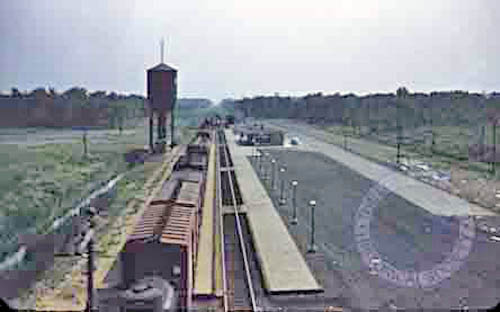 No information |
| Brockville See also Westport sub | 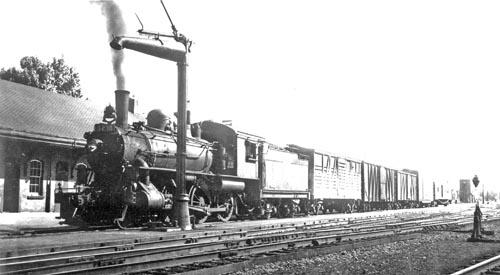 CN 1238 July 1950 Matt-0284 | |
| Brockville Yard | ||
| Gananoque Jct | 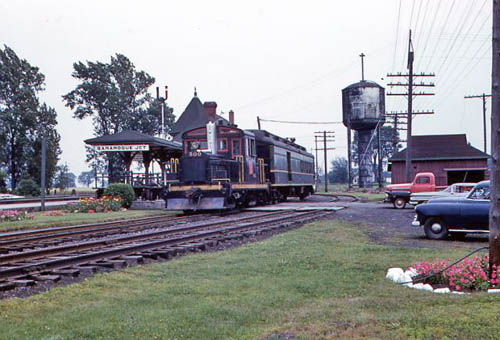 TIR 500 at Gananoque Junction Ken Chivers photo 1960 | |
| Kingston | ||
| Napanee | ||
Updated 7 November 2020
Home Main Findings Page
